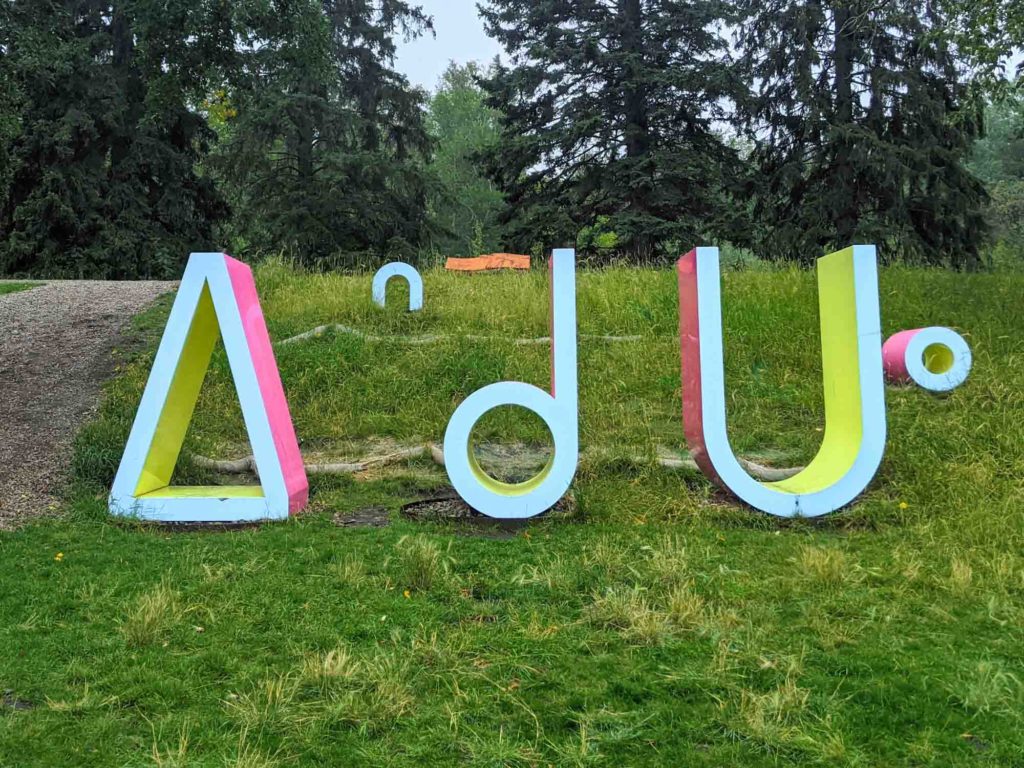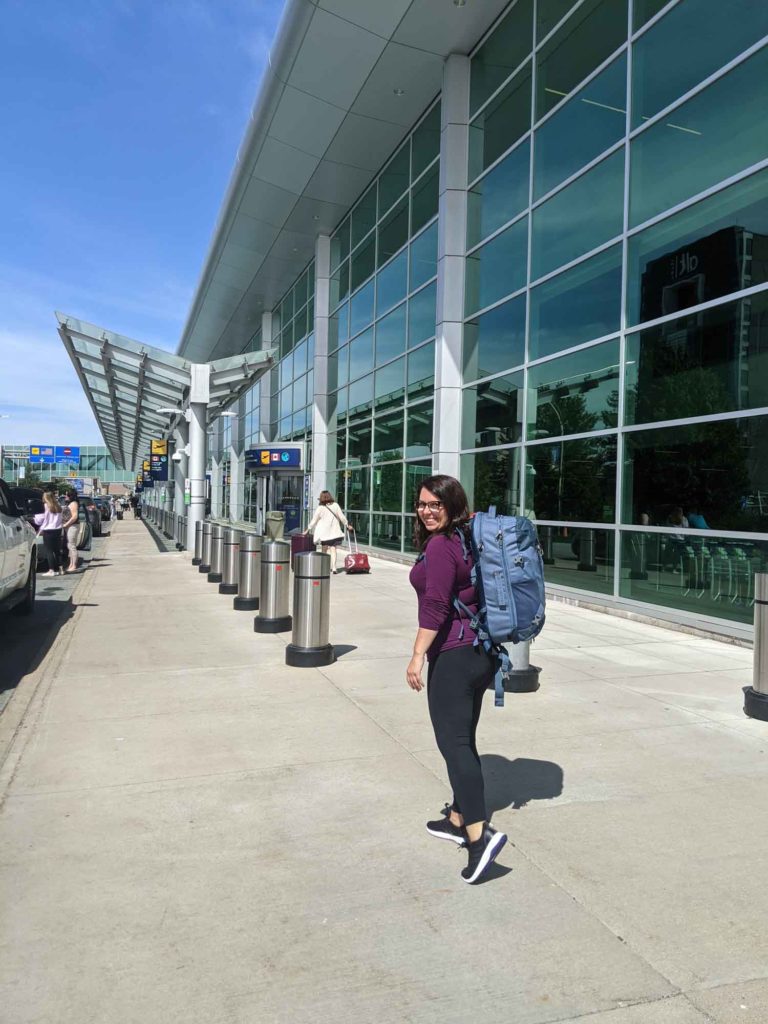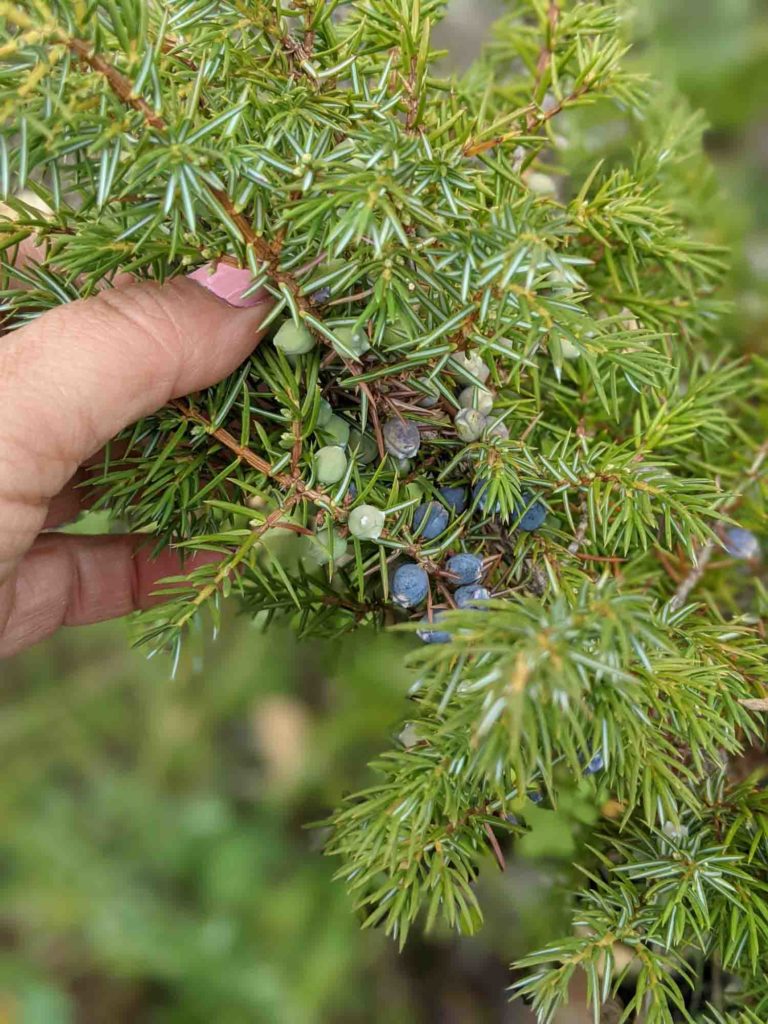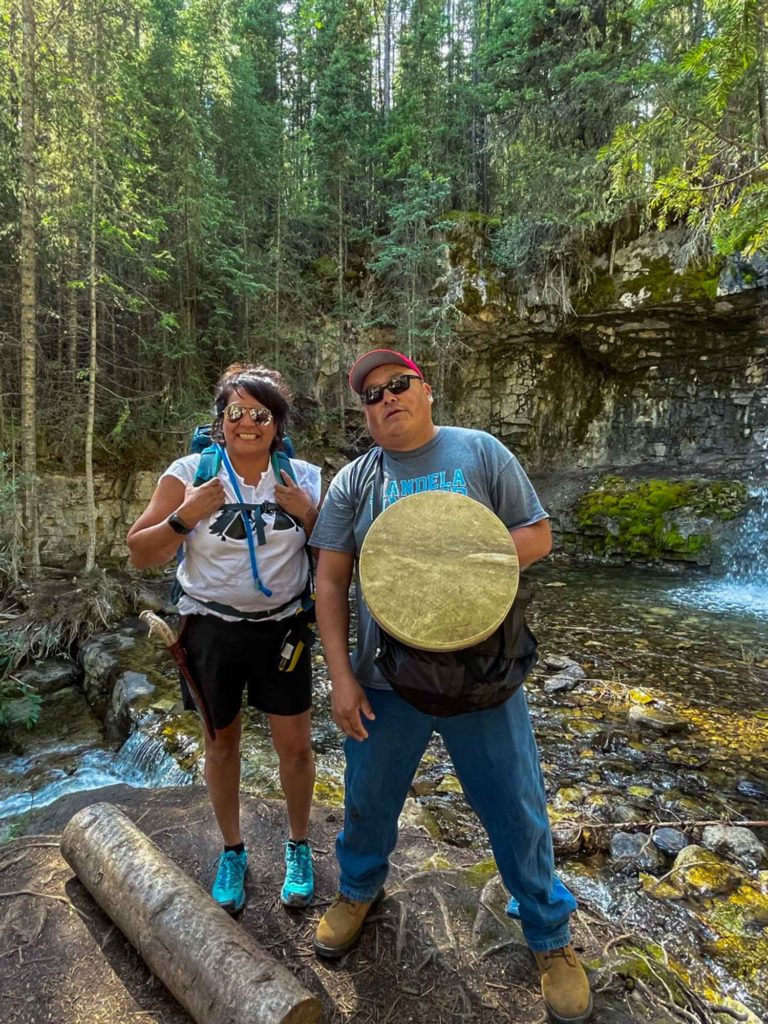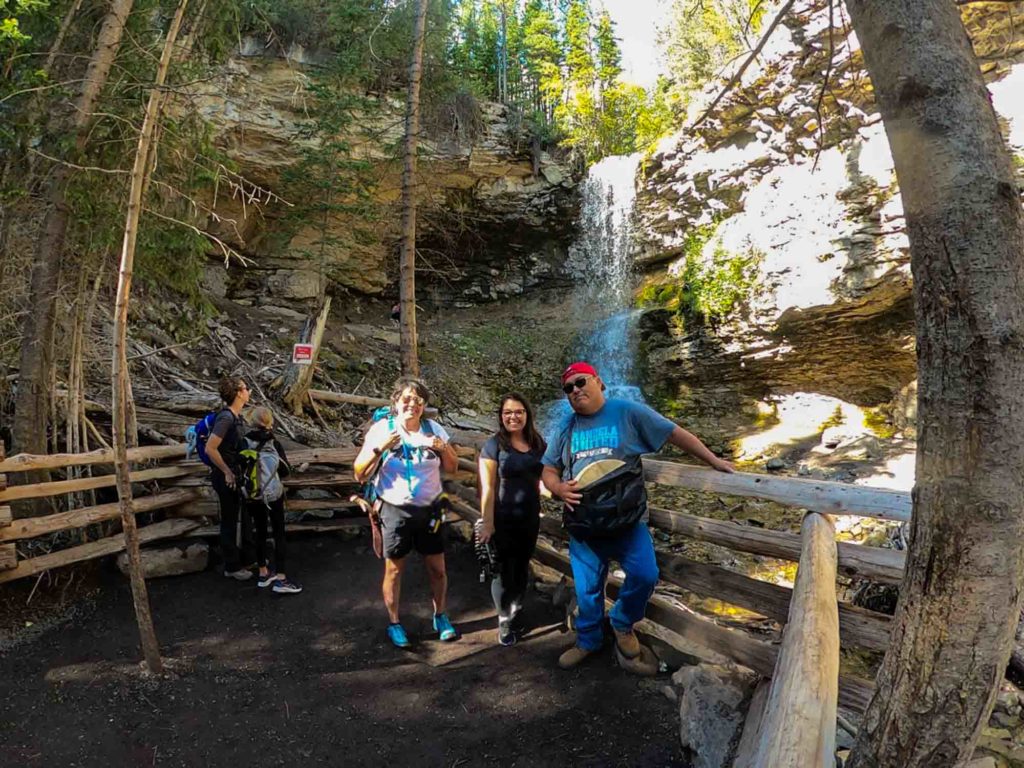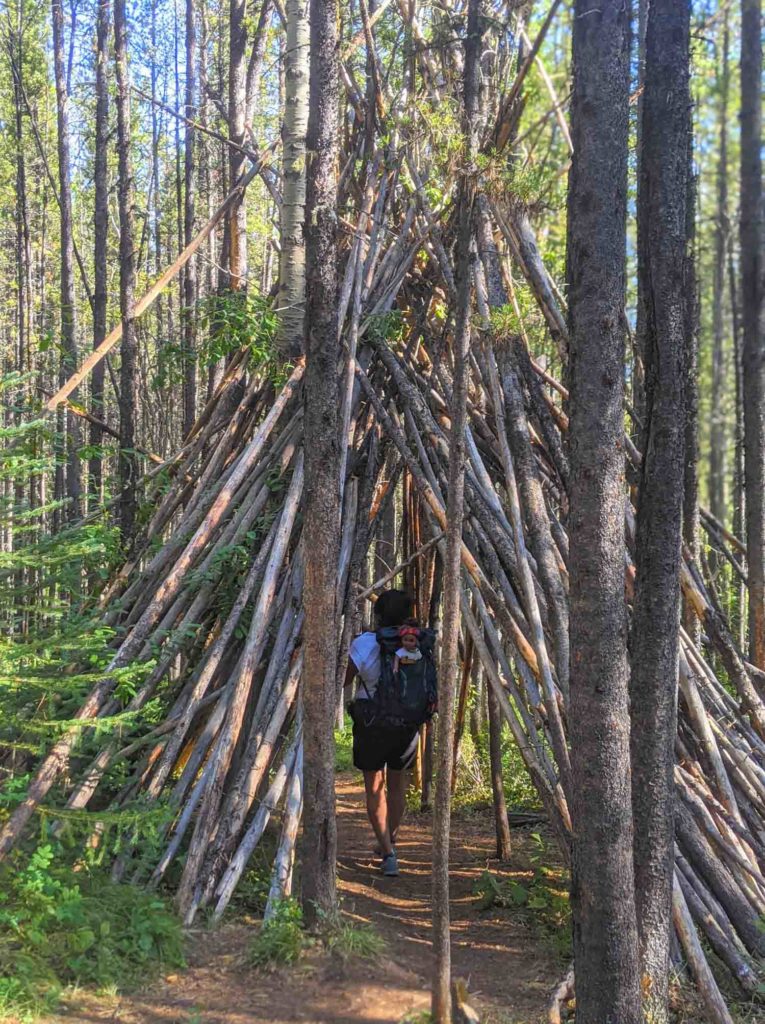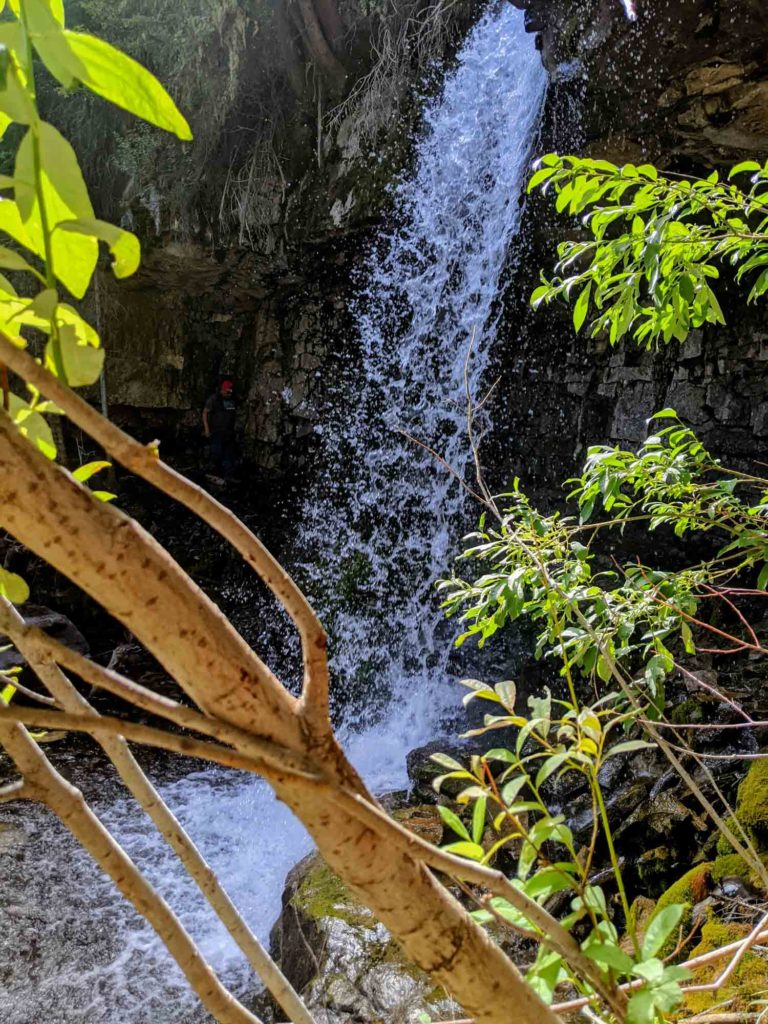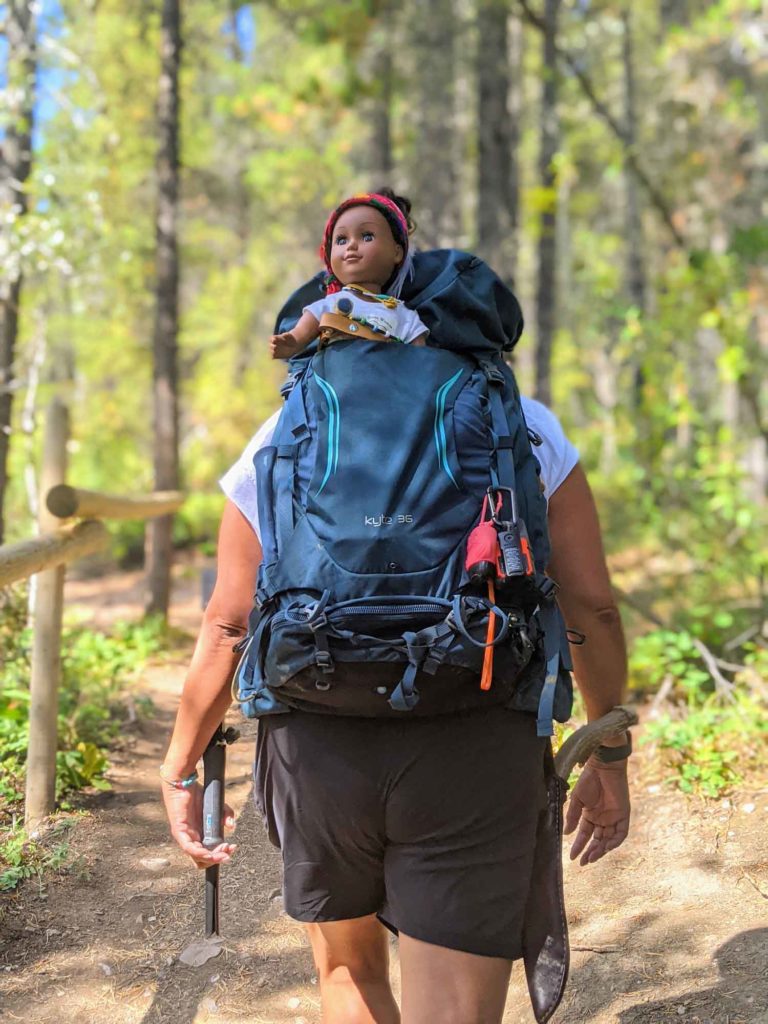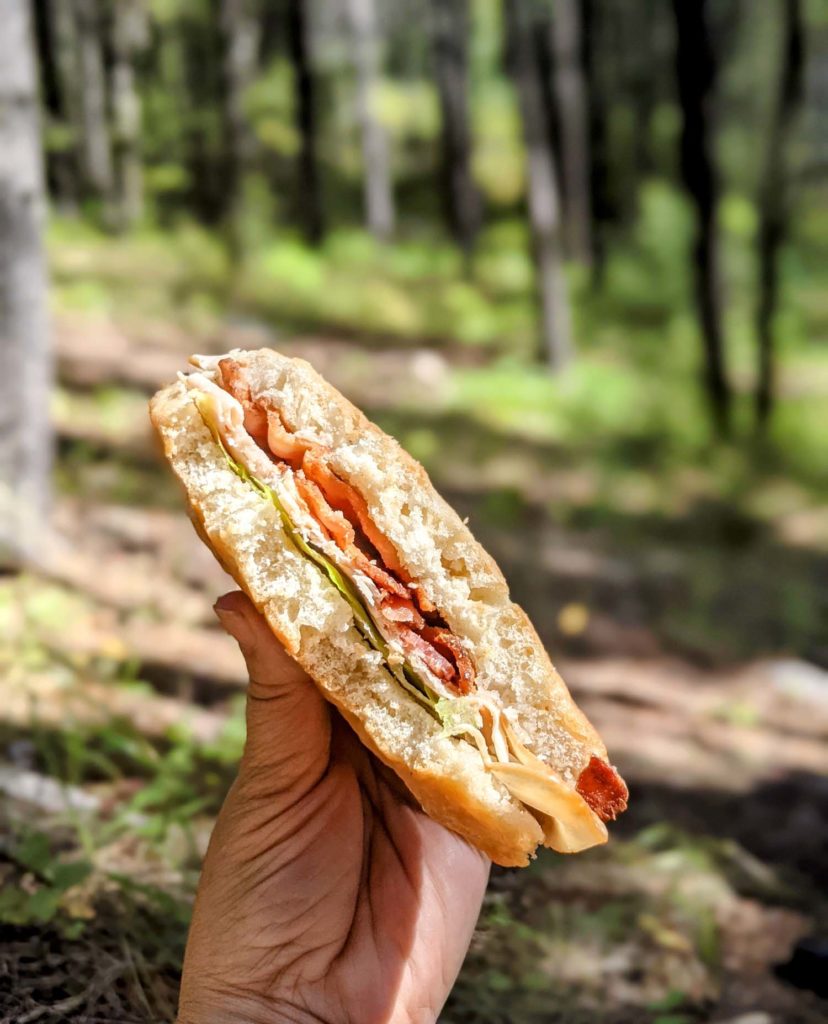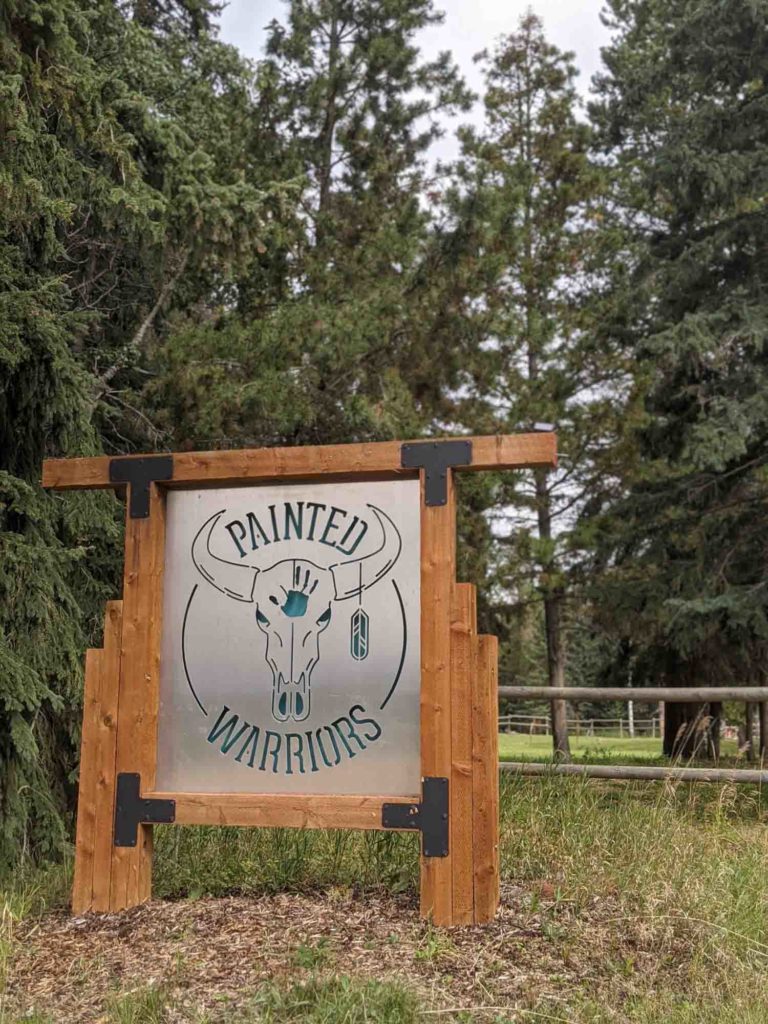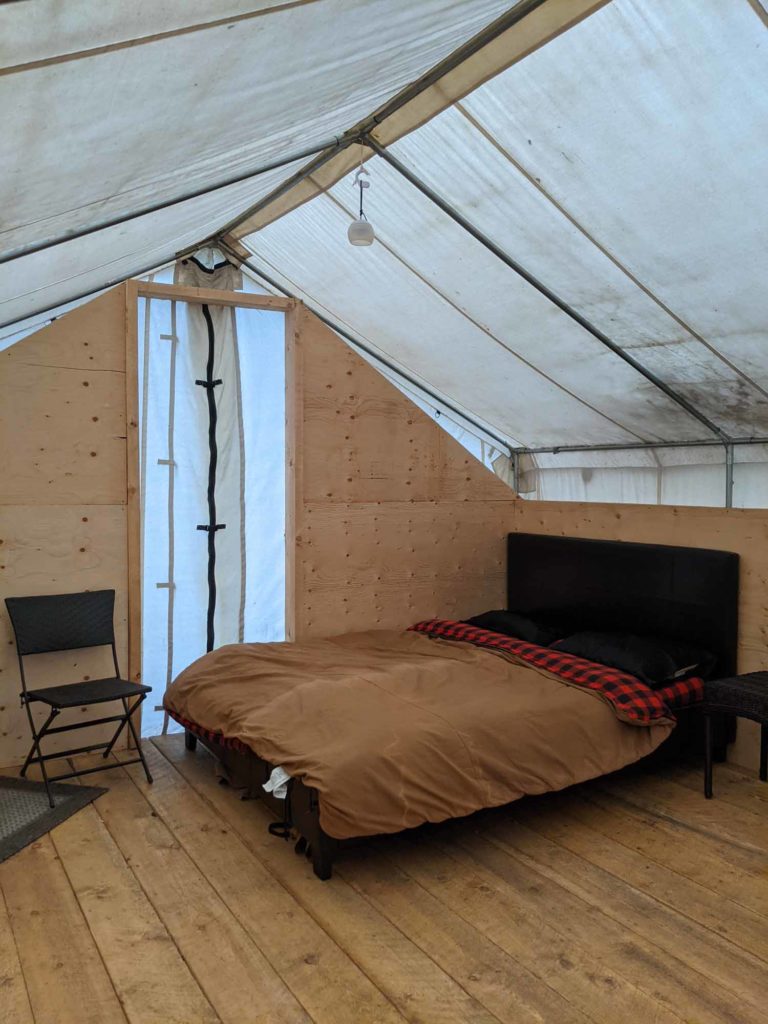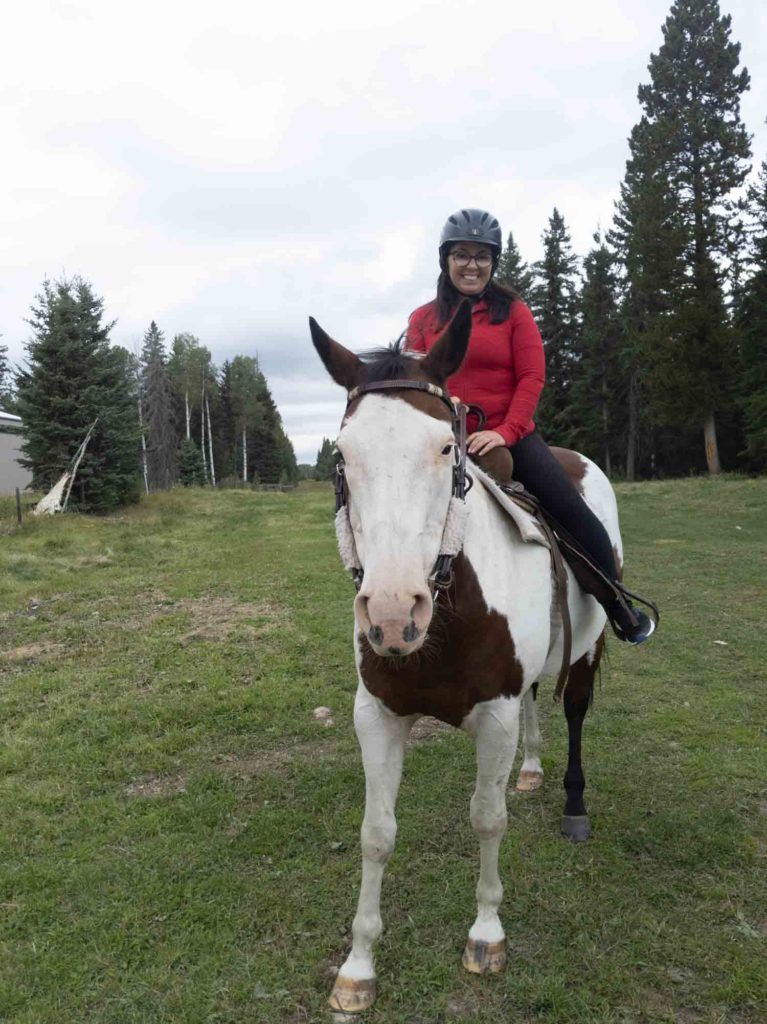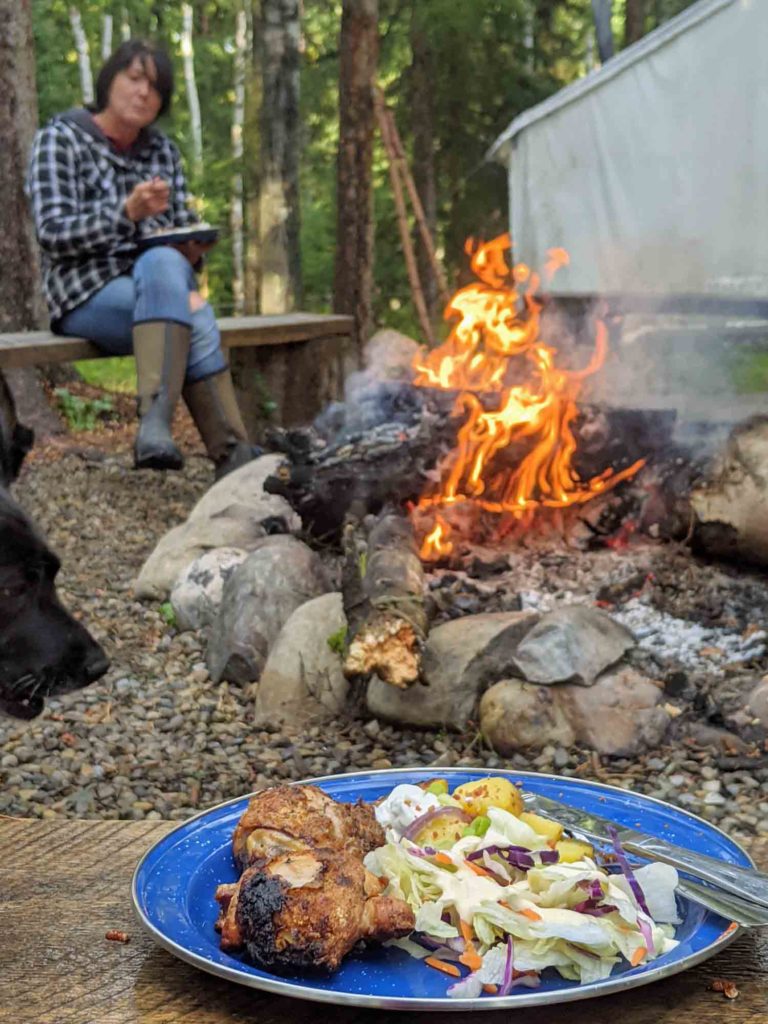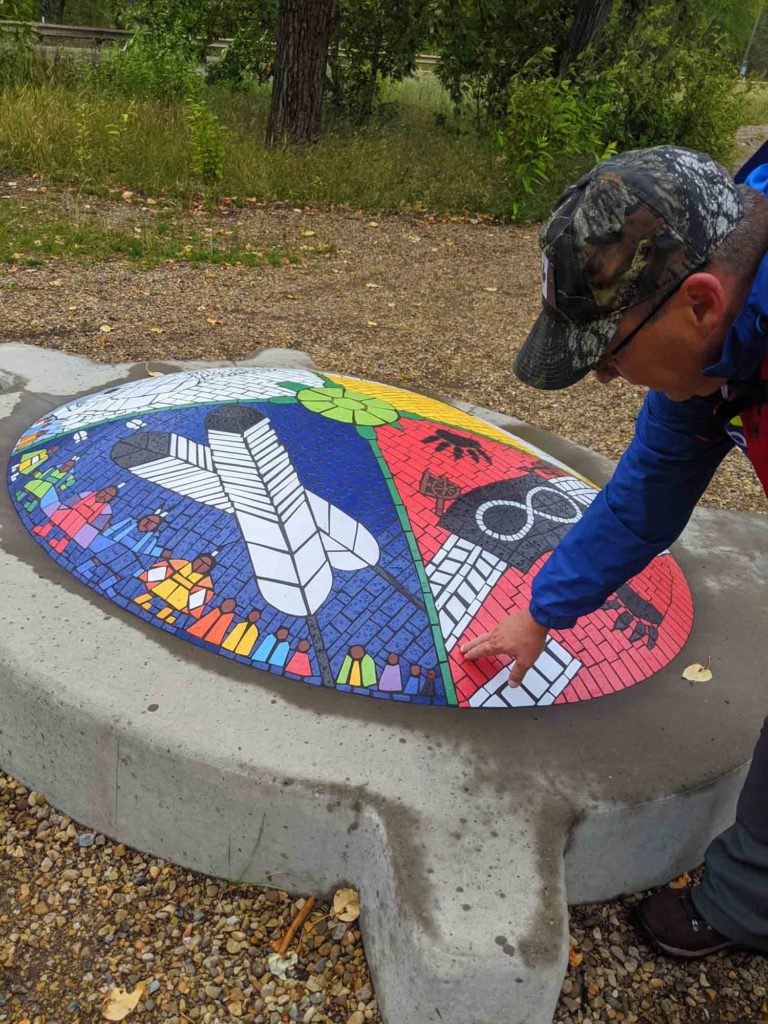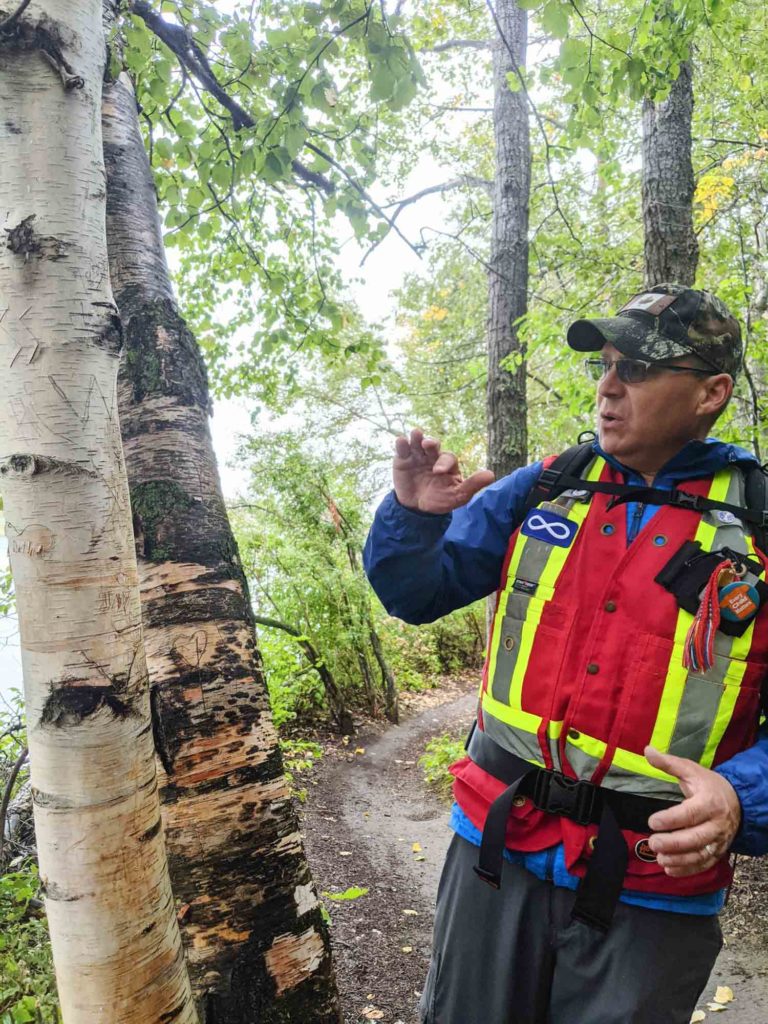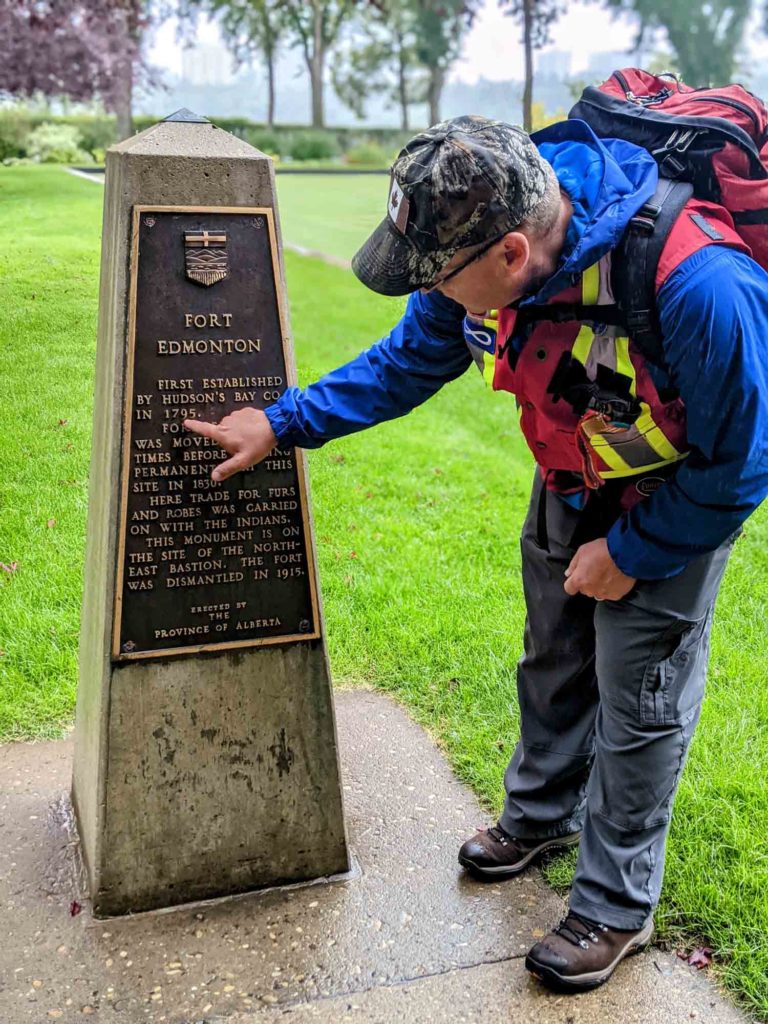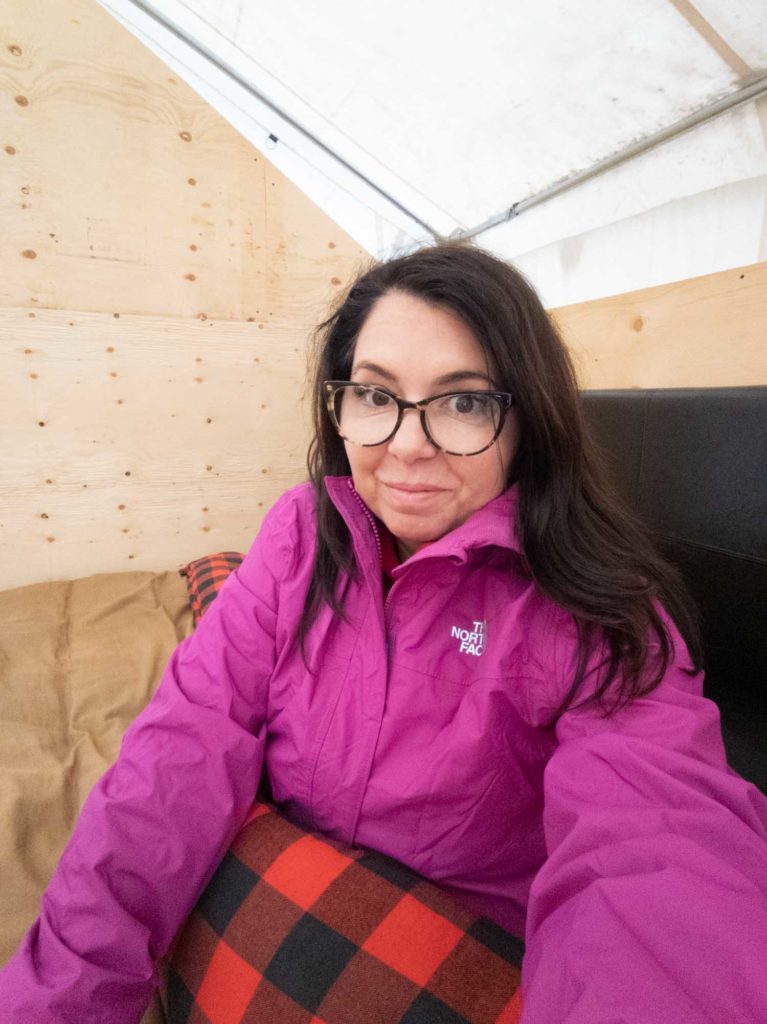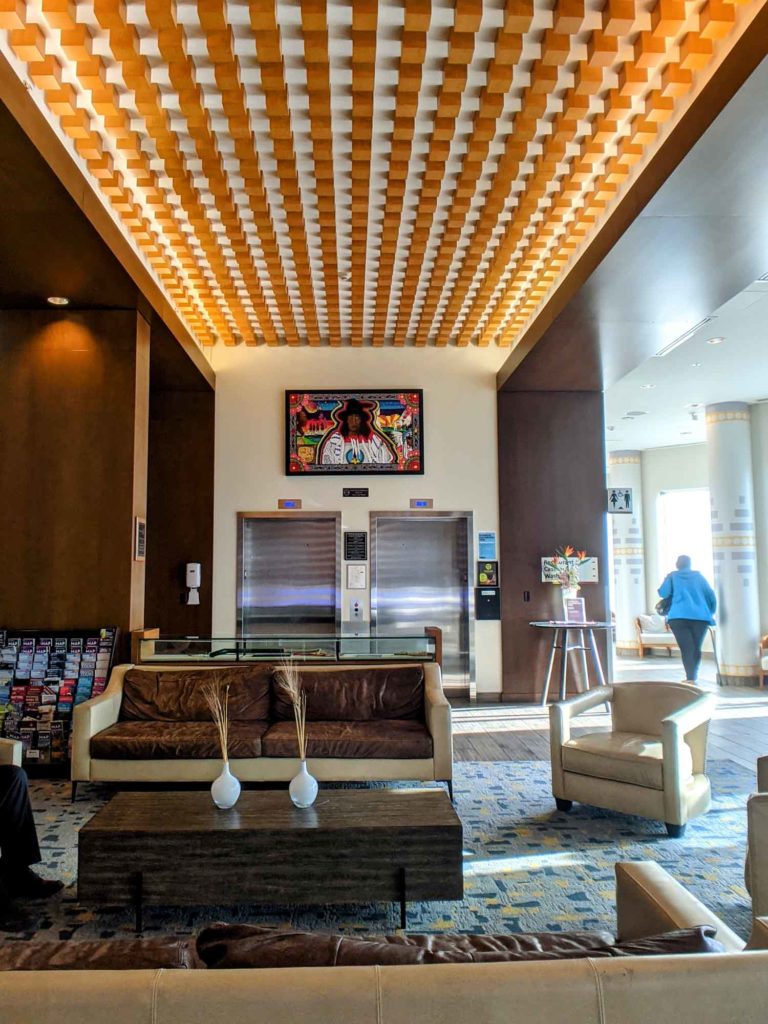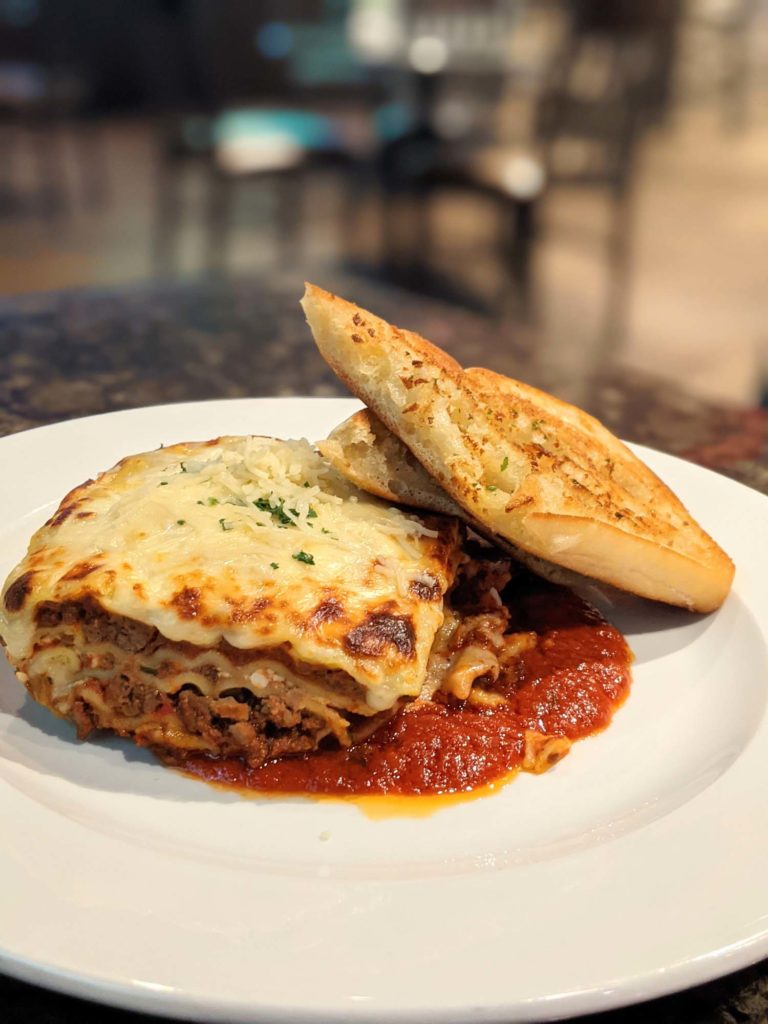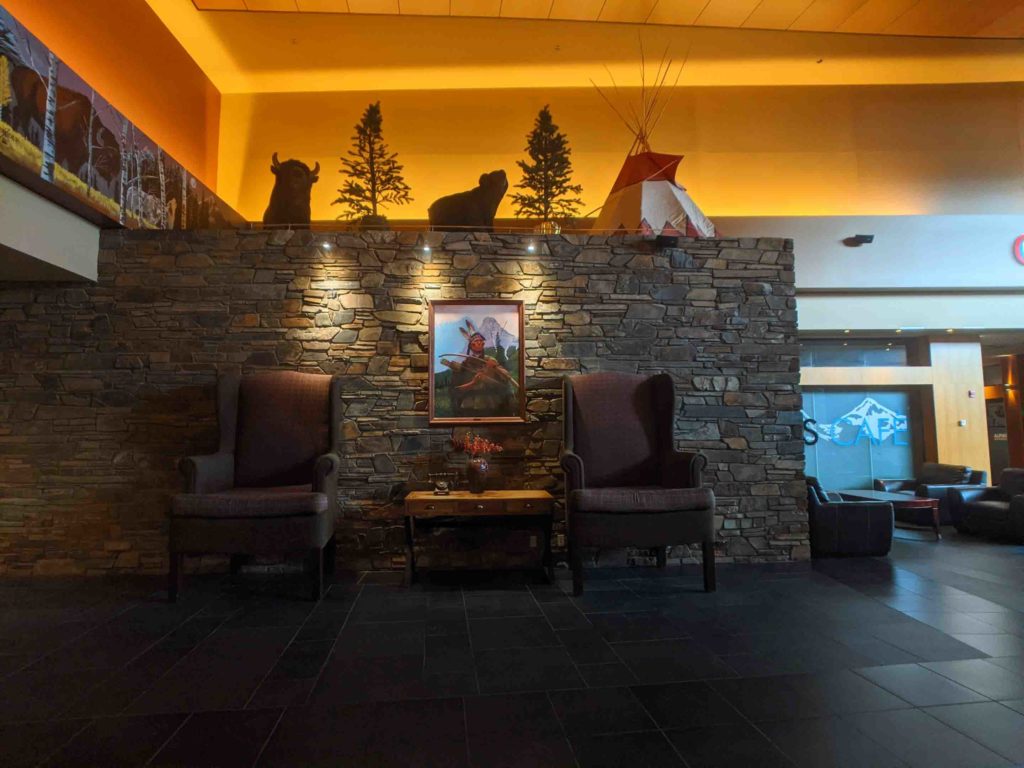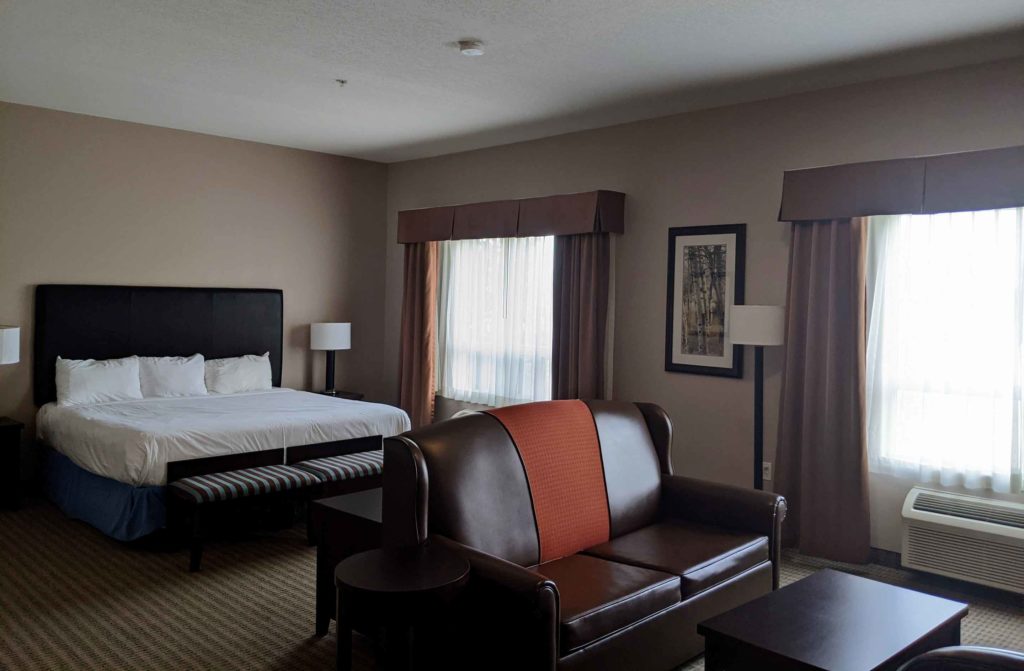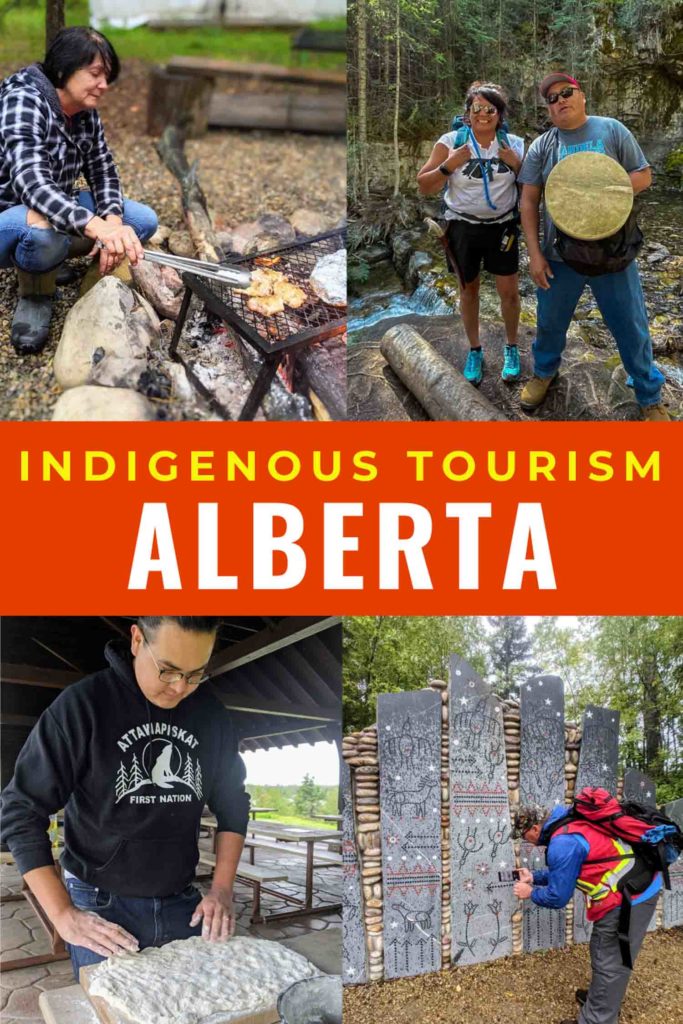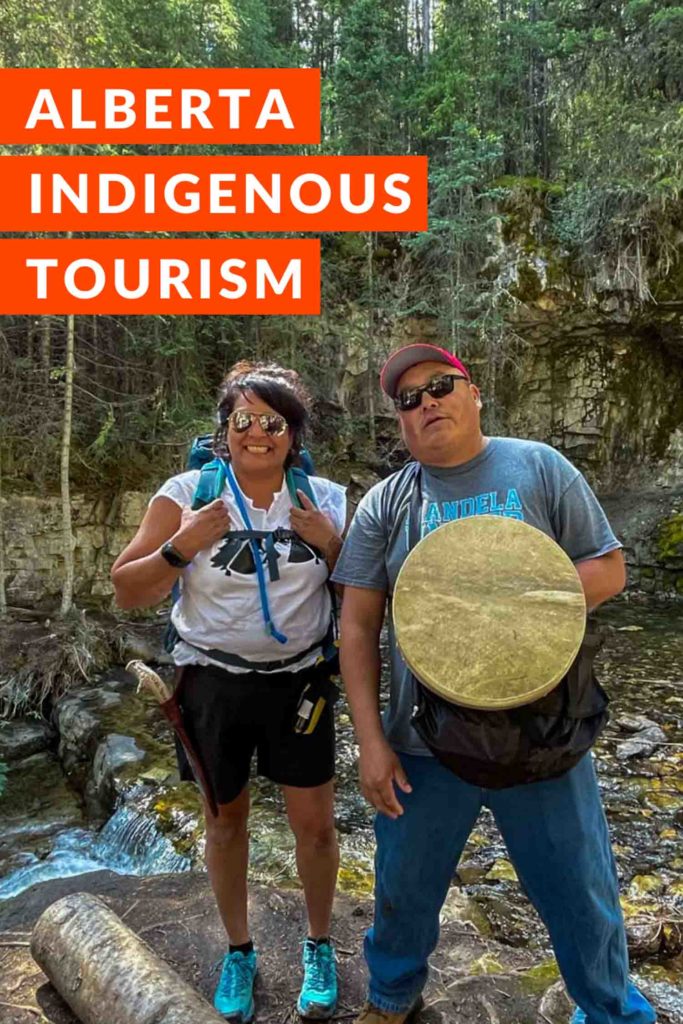Disclosure: This post is in partnership with Indigenous Tourism Alberta, as always I write based on my personal experience and I am honoured to work with them.
Indigenous tourism takes everyday experiences like hiking, cooking and horseback riding to a new level.
Is it possible to feel so full of energy and yet be exhausted by an experience?
I am blissfully tired, inspired by all of the people I met in the last five days who gave so much of themselves.
So much of their energy.
Now I’m not a woohoo, kind of spiritual, crystal carrying kind of gal. I’m type A, linear, fact based, science believing rational person…to a fault.
But describing this experience as a transferral of energy is the only way I can recount it.
And this trip was an awakening, because after my day out with Skip Wolfleg, who has a background in science I learned energy is science.
And traditional ways of Indigenous Peoples were often just a different way of expressing science than we know today.
All of that knowledge existed centuries ago. Yet somehow explorers colonizers came to this land and it took us generations to learn what they already knew.
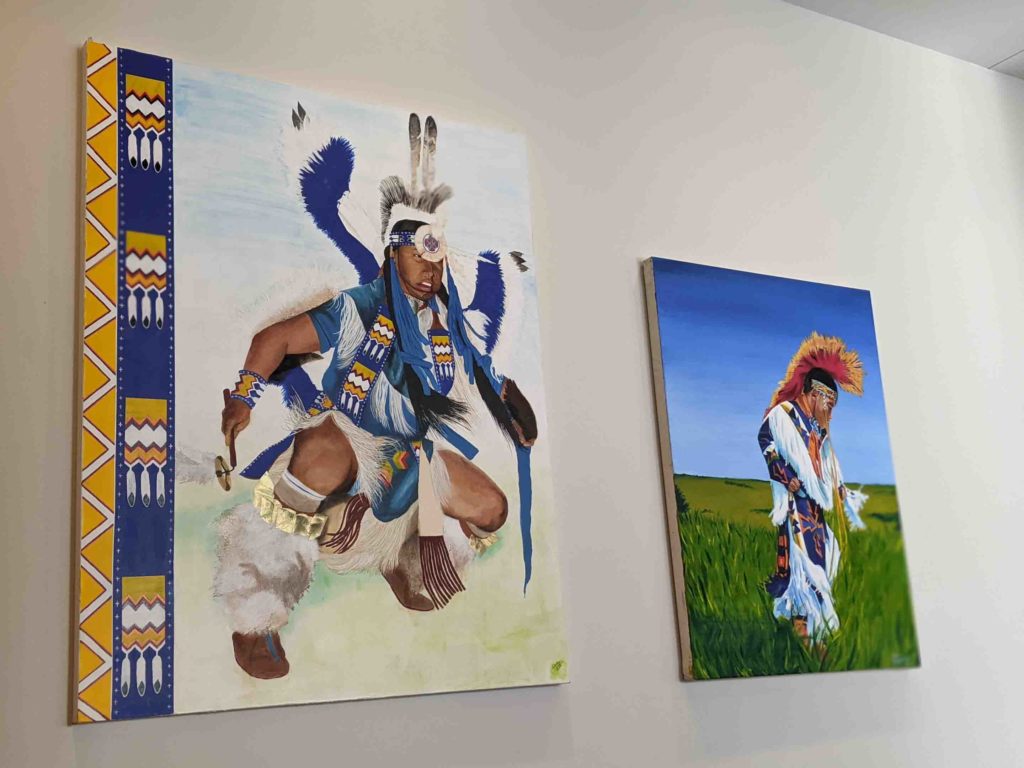
How to Speak with and about Indigenous Peoples
Many people are afraid of saying the wrong thing. Or using the wrong term and mistakenly offending someone.
But we cannot allow this fear to stop us.
As adults to learn what we should have in school. We need to drop our ego and be open to someone correcting us.
Because if you’re like me and starting from ground zero of learning about Indigenous Peoples, you’re also going to say something wrong.
But it is better to make the effort to learn.
And if you’re corrected once, you’ll remember it. And you probably won’t make that mistake again.
Let’s start with the basics…this video from Inuk journalist Ossie Michelin really helped me.
When in doubt, the overarching term is Indigenous (capital I).
As the video states, it’s like saying Asian, if you’re making a general reference.
But it’s better to be specific.
First Nations: The largest group in Canada, it is an umbrella term for many Peoples from Miꞌkmaq in Nova Scotia to Haida in British Columbia.
There are more than 630 First Nation communities in Canada, which represent more than 50 Nations and 50 Indigenous languages.
Métis: Descendants of First Nations and European settlers. Meeting with Keith Daikw from Talking Rock Tours, he expressed it as having two cultures. Find out more here.
Inuit: There are four Inuit regions in Canada, collectively known as Inuit Nunangat. Inuit means people, so no need to say Inuit people and Inuk means person.
And while the four regions are in Northern Canada, they live all over Canada. In fact there are over 3000 Inuit in Ottawa alone. Find out more here.
If you’re unsure, afraid to get something wrong or offend someone, just ask. Although there are standard terms individual people have preferences.
So ask, listen, learn.
And if you’re corrected, thank the person for teaching you.
Why we say Indigenous Peoples and not People
We’re not talking about just one culture, one language, one experience.
For example, I learned within the Blackfoot there are 4 different Clans. They understand each other’s language but have their own regional differences, accents and intonations,
And the Cree First Nations (Nehiyawak) span from Quebec to Alberta. So history and experience is going to be different depending on who you talk to.
I found the easiest thing to do was instead of focusing on categorizing people, simply to listen.
Because throughout my time in Alberta people were generous sharing their experience. They told the stories of their ancestors, their families and their own experiences.
And every one was different.
And although my job is to document my travels the most powerful things I experienced I didn’t capture on video or with photos:
- smudging – removing negative energy and purifying both a person and the space around them
- offering of tobacco to the land before taking from it
- learning about how residential schools affected their family
Even as I write this now a wave of emotion overtakes me. I feel so grateful for having experienced this, to the people who opened their lives to me and to Indigenous Tourism Alberta for having the trust to work with me.
You need to experience this for yourself, there are 19 incredible Indigenous experiences on their homepage. And I’d recommend all five below.
Why Did I Go to Alberta?
My last travel experience in Canada before heading to Ecuador! I was so excited to partner with Indigenous Tourism Alberta.
I had a bit of a wake up call in 2020 with the ongoing lobster fishing dispute between Sipekne’katik First Nation members of the Mi’kmaq and non-Indigenous lobster fishers.
Not to make it about myself but I realized I had zero knowledge of Mi’kmaq issues or culture.
Or…honestly… really anything.
It was a moment where I decided instead of cowering or blaming it on “we didn’t cover that in school” I could find resources and learn.
And I know you’re thinking, why Alberta instead of Nova Scotia?
We just aren’t there yet with Indigenous experiences in tourism. But I have hope that this will change.
Alberta was eye opening.
I don’t think I can ever really express just how amazing these five days were.
Not in words, not in video.
I honestly feel self-pressure to represent who I met well. Because they gave so much of themselves to me.
And I really want to honour that exchange, there were moments I was overwhelmed with kindness.
I felt emotional because they were so open and giving in a way I have never really experienced.
The best way to explain it was it felt like this warm circle of glowing light.
And the energy from that light was beautiful and engulfing.
This trip changed me.
Enough about me. Let me tell you about these amazing people.
Indigenous Experiences in Alberta
If you haven’t heard about Indigenous Tourism Alberta, they are a non-profit organization that encourages and promotes authentic Indigenous tourism.
Their site showcases immersive Indigenous experiences throughout Alberta. The types of experiences range from reflexology therapy to adventurous hiking.
The only problem is that there are too many amazing things to do. Which is why I did five different Indigenous experiences in five days.
And yet there are still others I’d like to do.






Pei Pei Chei Ow
Of course I looked for a culinary experience first, and Scott Jonathan Iserhoff was everything I wanted and more.
That’s because I met his whole family at Elk Island National Park.
Scott is the namesake of Pei Pei Chei Ow, which means robin in the Omushkegowin (Swampy Cree) language. It was given to him as a child because his excited chirping was like the bird.
But this is clearly a family business.
I met his wife Sveta, from Ukraine, which I called the Ukraine at one point and she kindly corrected me! Oof I knew that!
And their child, I could only think that the little one had the same beautiful enthusiasm – especially for the food as she chirped niam niam.
Scott grew up in Northern Ontario and as a child he watched Chef David Wolfman from Xaxli’p First Nation in BC, on Cooking with the Wolfman.
Watching a First Nation chef impacted him greatly. And while he worked in kitchens in Toronto he burned out like most do, but couldn’t leave the industry.
When he and Sveta moved to Alberta there were new opportunities. His cooking style using both traditional and Western ingredients put him in great demand.
Scott gives credit to his wife Sveta, an artist in her own right. She pushed him to put himself out there, she also organizes radio appearances and many other parts of the business.
And from a purely food standpoint, I can see why everyone wants a piece of him. His food is delicious.
But there is something more.
Pei Pei Chei Ow isn’t just about the food.
Scott tells stories and shares his experiences through food.
He discusses Indigenous food in today’s society, that while many think all Indigenous were hunters, his family are fisherpeople.
He talked about the impact of colonialism on the Indigenous food system and contemporary culture. But this isn’t a lecture, it’s a discussion over food.
Through his flavours he lures you in. You understand why representation is important to him and how expressing the diversity of Indigenous cultures is crucial.
Passionate, thoughtful and humble; my time with Pei Pei Chei Ow flew by.
And while I don’t want this young family to succumb to growing the business too quickly, I love his long term goal of opening his own restaurant with a 100% Indigenous staff.
Buffalo Stone Woman
Heather Black is the type of person you meet and shortly thereafter want to be her best friend.
She’s that awesome.
She is from the Blood Tribe Nation with the ancestral name is O’takii Tsowakii. And she is also known as the Indigenous Adventure Girl.
She didn’t conform to traditional gender stereotypes as a child. She was a boxer and a long distance runner.
A few years ago she started a group for friends to get out and reconnect with their land. The hiking group kept growing and she realized it was time to make a business of it.
One year later this entrepreneur is climbing mountains and leading groups.
I thought I was going to learn about plants and Indigenous culture while on this short hike to Trolls Falls where Skip Wolfleg from the Siksika Nation would drum and sing.
I had no idea the falls were just a pretty backdrop for the real experience. They welcomed all of my questions, even the ones I thought were too prying or inappropriate.
They shared their perspective of Treaties 6, 7, 8, 4, and 10, which Indigenous Peoples in Alberta continue to respect whereas it’s debatable whether the government is doing so equally.
I asked about residential schools, and they shared its personal impact on generations in their family and their hope for their family continuing traditions and language – which they continue to learn.
And so much respect for their Elders, who give them names, help guide their businesses and understand Traditional Knowledge.
Skip is an incredible human being as well, which is not surprising as Heather brought him and awesome attracts awesome.
Skip has a background in science and previously worked at a museum. He shared an entirely new dimension on the walk.
He ignited the idea that Indigenous Peoples already knew the science behind things we later “discovered”.
They learned by observing and respecting, and they expressed Traditional Knowledge differently through storytelling.
It’s only generations later that science validates what they already knew.
Many things we “discovered” already existed in stories from Elders.
Oh and Trolls Falls were beautiful. But I felt sorry for the hikers we passed because they were really missing out. The best way to see it is with Buffalo Stone Woman.
Painted Warriors Ranch
If you’ve ever wanted to test your beliefs and limits this is the place to do it.
Tracey Klettl made me reconsider one of my concrete travel rules.
Traveling all around the world I have been on many trail rides. You know the kind when you jump on a horse, hope for the best and follow a leader?
A few years ago I had enough of this. Why can’t I just walk the beach, why do I have to be terrified trotting out of control on the white sands?
Why do I have to see everything on a horse?
I have a stack of lackluster trail ride experiences, punctuated by moments where I felt unsafe, not in control and once I rode a horse that was so pregnant I was unsure if it was safe for the animal.
But when Tracey told me I was going to learn to ride a horse I said yes without hesitation. Perhaps all the years of working with animals, she is naturally the alpha for all mammals.
I followed her lead and trusted her without a doubt.
She told me it would be different than anything I had experienced.
And she was right.
She has a long list of accreditations and she trains guides from all over the world in horse riding, archery and wilderness education.
Originally from the region we now call Jasper National Park, she’s a descendant of Cree and Mohawk Nations. She told me that Cree people are known for their respect for and relationship with horses.
I wasn’t going to just jump on a horse. First we needed to bond.
So we walked into her woodlands to find her horses and watched them first to see how they interacted. She shared with me which was the lead horse and the following rankings.
Then I lead my horse into a stable, brushed it, put a saddle on it and it was time to go into the arena.
But it was not time to get on the horse just yet. I practiced walking, leading and ensuring my horse would stop when I stopped walking.
Finally we were ready, we started slowly before heading outside, ensuring both the horse and I were ready to go outside.
It changed everything.
I wasn’t afraid. I felt comfortable on the horse.I didn’t think we were going to go galloping off into the woods with me white knuckled, holding onto dear life.
It was actually a really wonderful experience.
Afterwards Tracey taught me how to light a fire! It was the first shot of adrenalin I’d felt in years. She cooked dinner over an open fire and I went to sleep in a cozy trappers tent, exhausted by all that I had learned.
She has a natural gift to help newbies like me feel comfortable in the outdoors. It’s really a special experience to spend time at Painted Warriors.
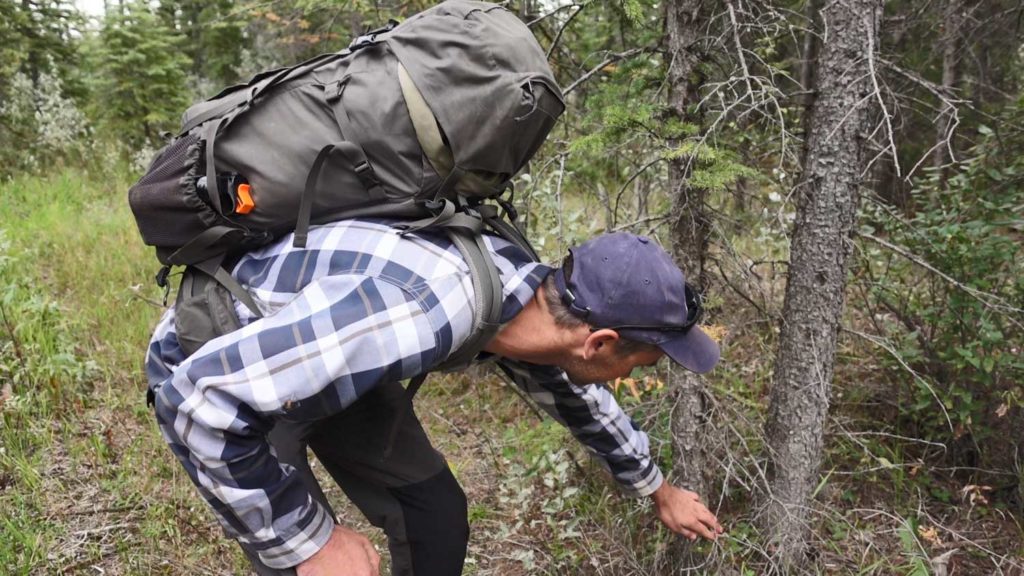
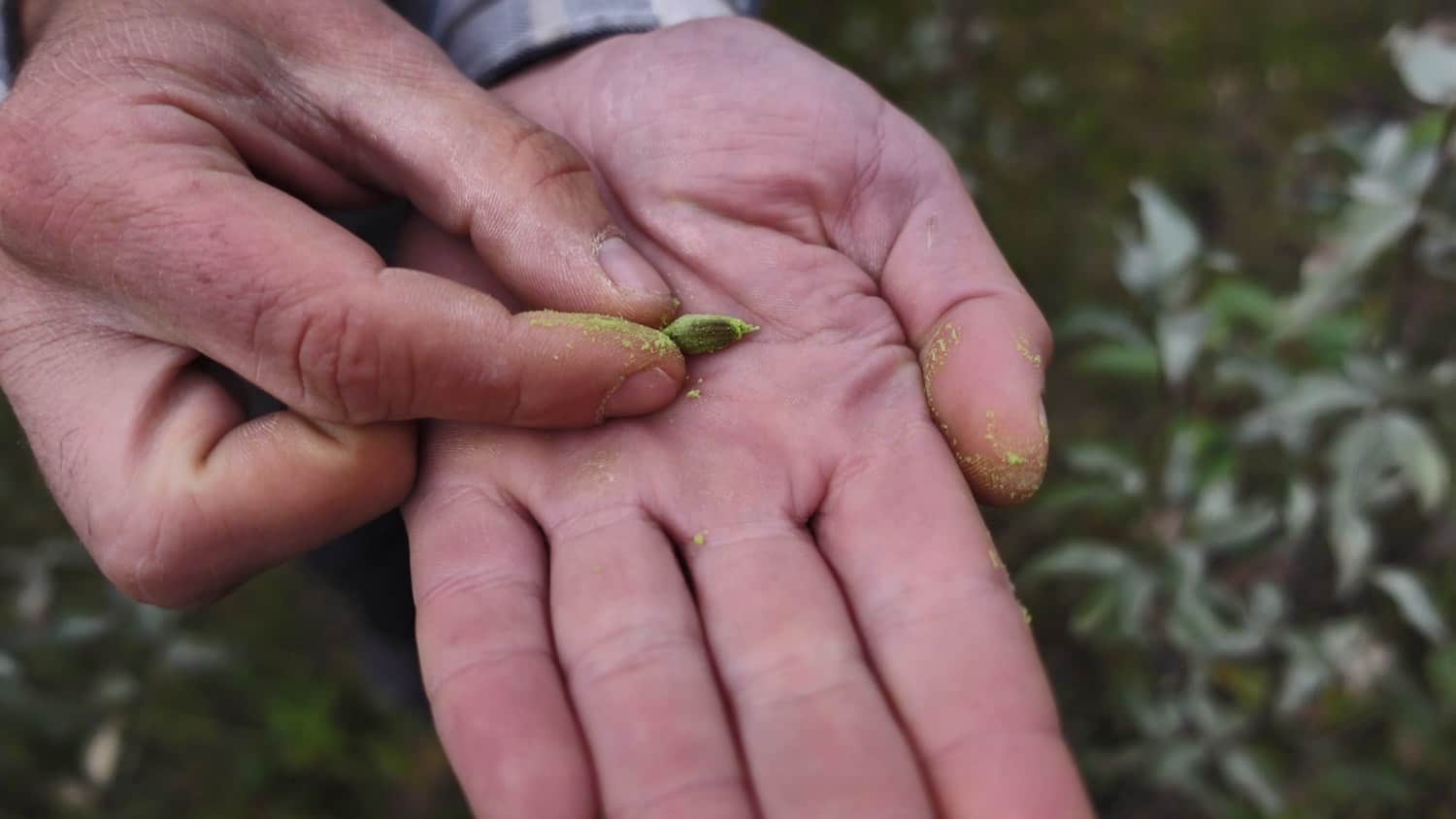
Mahikan Trails
Jordan is Tracey’s nephew and you can see this intense connection to the land runs in the family.
Do you remember the episode of X-Files where at a certain part of the show they realize they are being absorbed by a gigantic mushroom underground and actually hallucinating.
It was just a silly television show from the 90s, that wasn’t based on facts but I remember thinking wow nature is powerful.
But watching that was nothing compared to listening to Jordan speak.
He blew my mind. I’m very sure I said WOW! over 100 times in that hour.
We went on a short plant and medicine walk in Sundre. He believes in sharing the science side of things – much like my day with Skip Wolfleg.
He made reference to science validating what his people have always known and honestly I felt a pang of sadness.
Why are Indigenous Peoples validating knowledge that has been passed down for generations, simply because we were too slow to come to the same point?
Jordan and his mother Brenda run tours at Mahikan Trails, a Cree Iroquois company. Jordan has an incredible amount of knowledge and we talked about everything from the natural agent of aspirin being in trees to how I can avoid being attacked by bears.
He has a dry, self-deprecating sense of humour, which I love because he weaves it amongst factual aspects of the plants and you have to pay close attention to catch it.
My only regret is spending such little time with him.
He has such incredible knowledge of how we can heal ourselves with plants, makes a killer honey mint tea and tells the best story of a bear breaking into a bank and defecating on the bank manager’s desk…you’ll have to take his tour to hear this one!

Talking Rock Tours
As someone who considers themselves logical, linear and type A to a fault. I have loved meeting people with a science background.
But perhaps Keith was one of the most interesting stories, because he didn’t grow up feeling connected to his Métis heritage.
Of course he had family reunions and noticed some of his family was Indigenous. But the reunions were so large he didn’t know these people.
As an adult he decided to connect to this part of his heritage. Now he feels he has the best of both worlds.
We spent three hours walking through Edmonton’s famous river valley – which is 22 times larger than Central Park in New York City.
Time flew by as he shared so much about the city’s history, geology and Indigenous history in Edmonton.
He explained why hair is so important and the reason some wear long symmetrical braids is because it represents sweetgrass, one of four plants considered sacred to Indigenous Peoples in Canada.
At the end of the four hour tour Keith revealed that his superior in the Navy said that now if people have a valid reason to grow their hair because of culture or religion that the Navy would allow it.
And he told me he wasn’t ready to do it yet. But he was seriously considering it.
Where I Stayed
In addition to the Painted Warriors trapper’s tent (what an experience) I also spent time at two Indigenous owned properties.
To be honest I was not sure how I’d feel about staying in a casino. I wanted to share the culture of Indigenous communities in Alberta and this didn’t feel very cultural.
But I was wrong. Casinos are a part of modern day considerations in Indigenous communities.
A relatively new appearance in Alberta, there is no one general consensus amongst different groups, or even people, of whether casinos are good or bad.
But no one can deny that they bring needed money to communities. Money that pays for infrastructure, education and opportunities.
So instead I decided it was not for me to judge, but simply experience as a tourist.
Eagle Grey Resort and Casino
I really liked Eagle Grey Resort, it’s a really affordable hotel just outside Calgary on the doorstep of the Rocky Mountains.
I’m not a gambler, other than the occasional game of bingo. But the hotel is in a separate building from the casino and I saw families entering and booking the pool.
There is dining in both the hotel and the casino. I tried the bison lasagna at the Blaze Bar in the casino and it was fantastic. And service was just as great.
But what struck me most was how light and bright the main areas were, with lots of colourful artwork and explanations.
Even if you don’t gamble, this is a great hotel to stay in.
3777 Grey Eagle Dr, Calgary, AB T3E 3X8, Canada
Stoney Nakoda Resort & Casino
There are three bands in the Nakoda First Nation: Bearspaw, Chiniki and Wesley.
Nakoda means friend. They were given the name “Stoney” because they use heated rocks to boil broth in rawhide bowls.
Without a doubt the landscape here makes you feel like you’re a tiny speck in this big world.
It’s at the junction of Highway 40 going to Kananaskis. The Stoney Nakoda Resort and Casino is a great location if you’re road tripping to Canmore or Banff because this is the base camp of the Rockies.
There are two options for dining. The charcuterie board has local wild game cures with Saskatoon berry preserve and fry bread.
This property has been open since 2009.
888 Nakoda Way, Kananaskis, AB T0L 1N0, Canada
